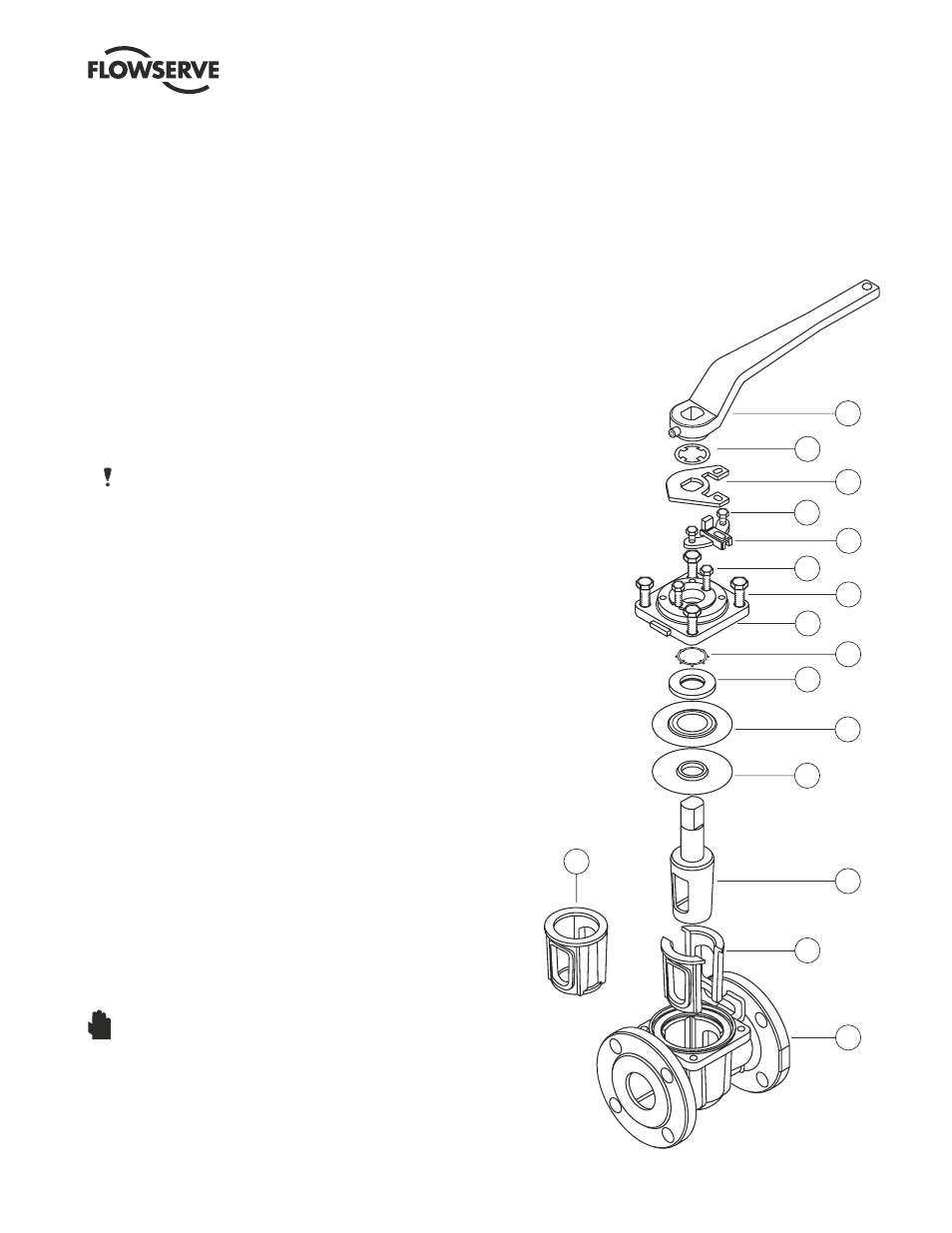Flowserve Mach 1 User Manual
Page 3

3
User Instructions Mach 1 High Performance Plug Valve - DVENIM0300-01 - 03.13
®
FIGURE II-1
Typical Assembly of Mach 1
SECTION II
OPERATING/MAINTENANCE INSTRUCTIONS FOR MACh 1
Maintenance requirements for Mach 1 valves may vary due to
operating conditions of the process. Factors such as operating
temperature, pressure, solids content, and frequency of
cycling can influence valve performance and maintenance
requirements.
Seal wear is compensated by adjusting appropriate parts. For
Mach 1 valves, there are three possible leak paths:
1. Top Cap (bonnet)
2. Stem
3. Line (through)
Corresponding adjustments for each leak path are as follows.
NOTE: Refer to Figure II-1 or Figure VI-1 for parts identification
1. Top Cap (bonnet)
Leakage due to thermal or pressure cycling is eliminated by
tightening the top cap fasteners (Part 10) in a “criss-cross”
pattern to the torque values given in the tables. This adjust-
ment is most effective when the valve is not pressurized. It is
important that the top cap fasteners not be tightened exces-
sively and that torque values applied be within industry stan-
dard for fasteners.
2. Stem
Leakage due to wear of the diaphragm, and/or wear to the
sleeve (primary seal) is eliminated by tightening the adjuster
fasteners (Part 11) in 1/4 turn increments. The adjuster fas-
teners must be tightened evenly for maximum adjustment. The
valve should be operated between adjustments to assure that
the plug properly seats itself into the sleeve. If leakage persists
after repeated adjustments, the sleeve and diaphragm will
require replacement as covered in Section V and Section VI.
3. Line (through)
Through leakage due to wear of the primary seal can be elimi-
nated by tightening the adjuster fasteners (Part 11) in 1/4 turn
increments. The fasteners must be tightened evenly for maxi-
mum adjustment. The valve should be operated during adjust-
ments to prevent excessive operating torque. Should leakage
persist after repeated adjustments, the port seals or sleeve will
require replacement as covered in Section V and Section VI.
WARNING:
To avoid personal injury and prevent damage to
equipment, do not operate or repair this valve without observ-
ing the following procedures outlined in this manual.
4
16
14
12
10
9
8
7
6
5
4
3
2
1
7
11
13
15
17
20
19
18
STOP!
